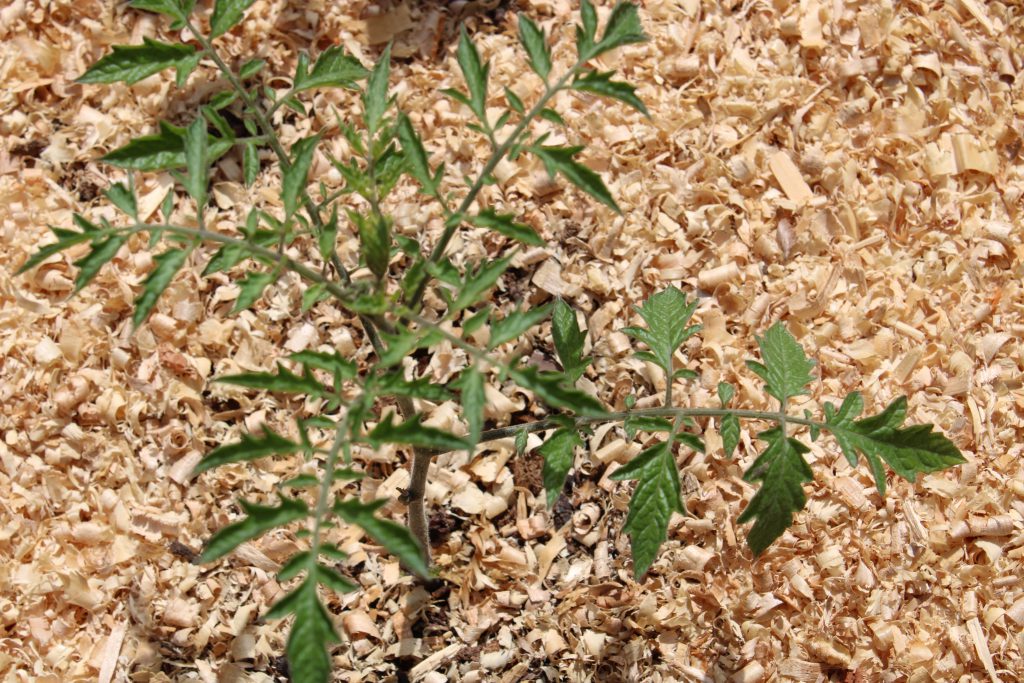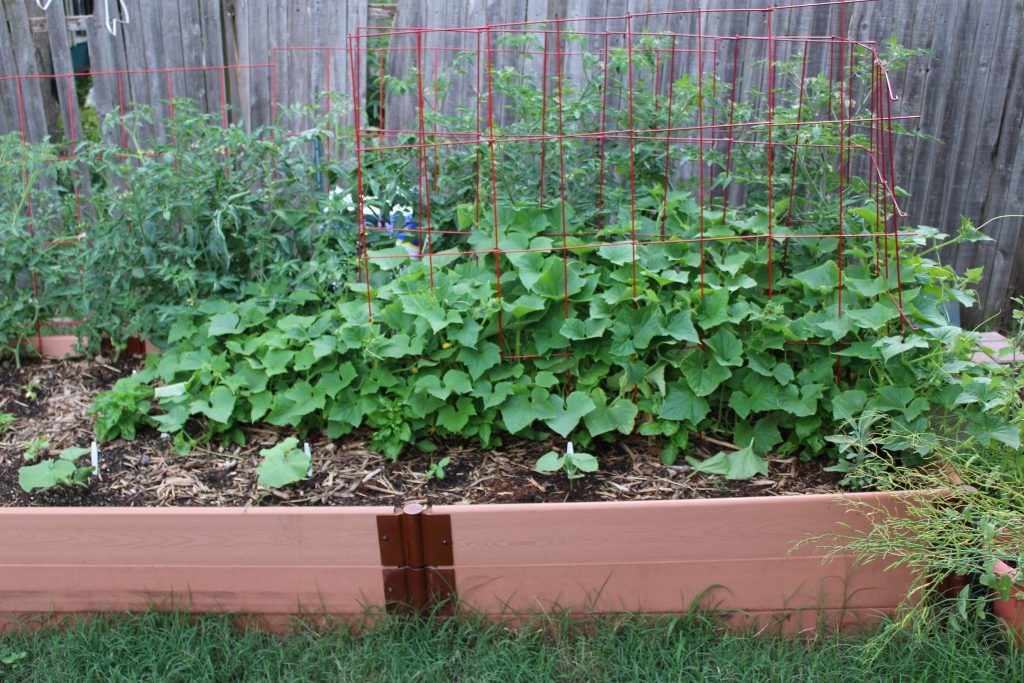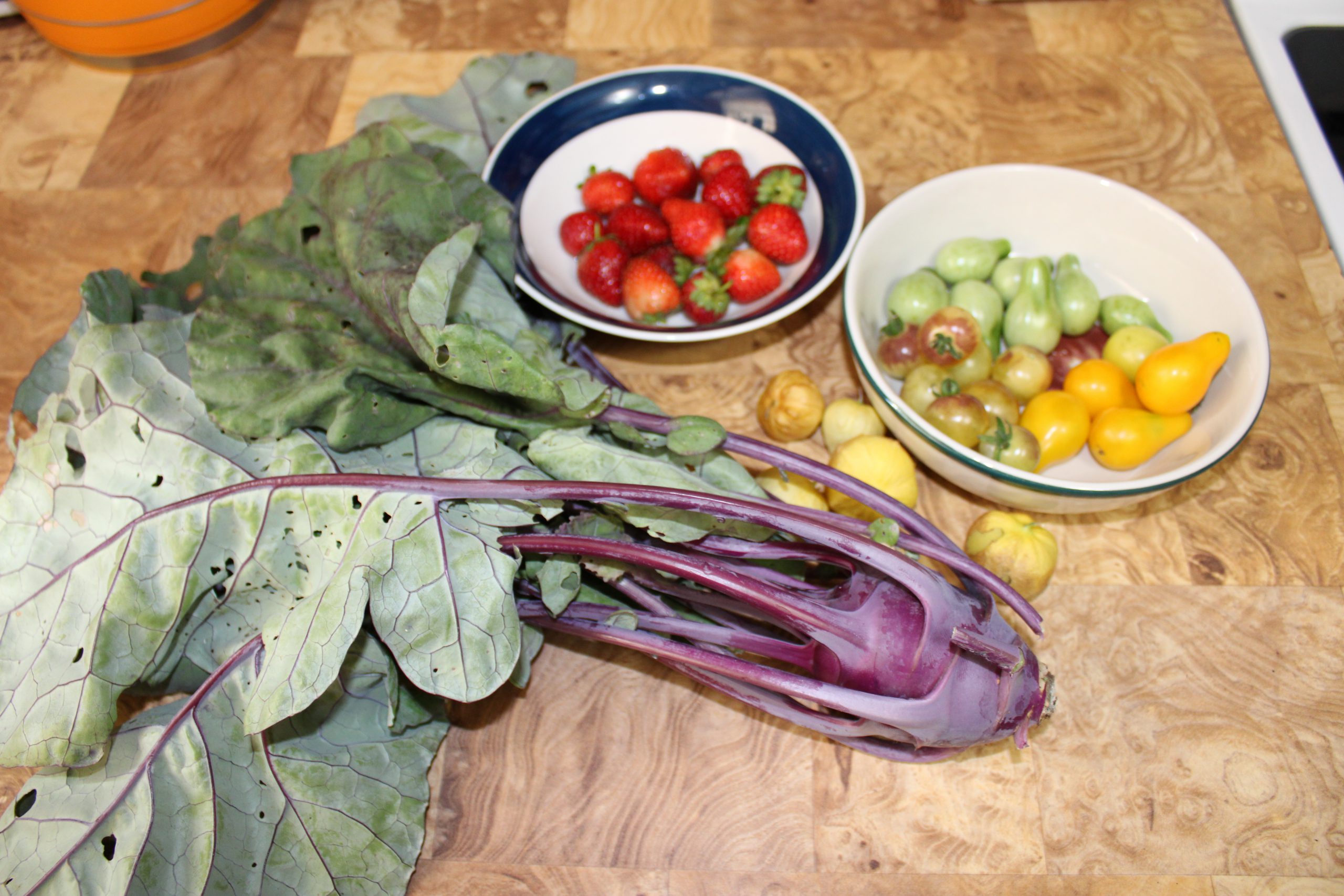I was collecting produce from my garden. I like this time of year. A bit of trimming for disease and airflow and some weekly watering sessions. But mostly it is just collecting produce from my garden. My garden this time of year is really on easy mode and I do complicated crap in my garden. Then I remember when I realize this truth back when my garden was really a easy mode garden.
One of the big things that I always hear from people when they find out I have a garden is, “Oh that is so much work!” I have never successfully convinced them that gardening is not that much work once you have the initial work done of building the thing. When properly put together, a garden once constructed takes very little work. If you don’t believe it is possible to have an easy mode garden, then ask yourself why there are so many gardeners that do it decades into their retirement? .
How to Make the Easy Mode Garden
The singular key to an easy mode garden comes down is soil and you can do these three things to get it off and running. These things will keep the weed down, keep the plants fed and generally idiot proof the garden as much as possible.
Easy Mode Garden Step 1: Raised Beds

First, we need to use raised beds. Make your bed tall enough and you don’t have to bend over very far. Too high however requires a ladder to get to those tomatoes at the top of the trellis. I like 18 inches but settle for 12.
Why does this contribute to an easy mode garden? It lets you avoid your native dirt. Most likely, your dirt sucks. It is full of clay, sand or rocks. Just avoid it by using a raised bed.
Of course a raised bed also helps in keeping the local weeds under control. They have more issue creeping into a raised bed than they would in a in-ground design. Also raised beds are easier than pots because like an aquarium, bigger volumes are easier to manage.
In pots you have small soil so less water retention. You have less drainage. A pot will never drain as well as open bottom raised bed. The amount of soil keeps the temperature from having wild mood swings and it just makes it easier to work in general.
As a side note, you will want to use a very high quality weed cloth if you have Bermuda or Buffalo grass or it will fight you in the garden. In fact it will fight you in the garden anyway but at least you can slow it down. Otherwise some cardboard to help smother the grass.
A raised bed such as the metal one above will also help keep the bed within 3 to 4 feet in diameter. Anymore and you will have to climb into the garden. You don’t want to do that. it really messes up the soil to stand on it.
Finally remember to stick it in a place with a good 8 hours of sun.
One final thing, do not use anything toxic as your raised bed material. No tires, no treated lumber, no recycled vials of plague from your bio-weapons day job. Use your brain for your raised bed material.
Easy Mode Garden Step 2: Fantastic Soil
This is the one that gets most people. It is hard work putting the soil in the raised bed. I won’t lie, lots of sweat is required. However, when you are finished, you will have something that will last for years with only a little work. There are two easy ways you can go to get a decent soil out of the gate.
First, you make something like Mel’s Mix. It is a Square Foot Gardening thing but when you hear 1 part compost, 1 part peat moss and 1 part vermiculite, know they are talking about Mel’s Mix. I use a modified version in my garden that is lighter on vermiculite and higher on compost but that is experience in my micro-climate that led me to that. Basically you mix it all up and dump it into the bed. I will warn you it takes a bunch of water to hydrate the peat moss so do it before a rain if you can.
Second, is cheat. Grab some potting mix and dump it into the garden. It will be different but most potting mixes are peat moss and perlite with a touch of organic matter. If you want to take your game up a bit higher then swap 20% for compost mix. Just grab a bag from each compost pile in the store that cost over $2 or $3. Cheaper ones tend to have less composted stuff or clay mixed into it. You can make it work. I did but it is much more work. Dump all you potting mix then add the compost to the top. Rake it in between bags as best you can to get it mixed up.
To refresh the soil every year, dump that same mix of compost on to it every year. Eventually, your peat moss and perlite will breakdown but the soil will still be amazing.
You can tell if your soil is good when you dig into the ground and see worms. If you got worms, you did good. It will take some time for them to colonize so don’t get too sad when you don’t see them in a week. Give life a chance to get setup in the new environment.
Easy Garden Step 3: Mulch
This is one of those things people don’t want to do. It just feels like a waste of money. It isn’t. Your plants love the sun. Your soil does not. Just like our skin, too much sun is bad for soil. Bad soil leads to bad plants. Bad Plants means low yields. Low yields means an unhappy you.
The sun will drive off moisture meaning you need to water more often. It also means that the top layer of soil will be dead from UV and heat exposure. There are a bunch of reasons but mulch saves the day. Hold off on $4 a bag mulch. That is way too expensive. You can either use the cheap compost, the stuff I said a minute ago to not go with for soil, from the store or my favorite, gerbil bedding. Either one, do not mix into the soil. Lay on top. Both will breakdown when they are good and ready and do not need any help from you. Pile up a couple of inches over the bed. Keep it pulled away from the base of a desired plant, a couple of inches and you should be golden.
This will get you a little garden to get you started with very high odds of being successful. You will have to water about 15 seconds per square feet once or twice a week but the compost will provide the feed the plants need to live and give you a harvest. Once you are comfortable with this little garden, you can then move on to increasing yields with fertilizers, variety selection, water filtration and the other things that make gardening sound like a much more complicated hobby than it actually is.

When you run into pests, you have two options. Leave them alone. Most will not kill your plant but some will take the whole yield. You have to decide how hard to fight. Really, if big things like your tomatoes are just gone. That is birds or mammals. Netting your garden is the most basic solution. If it is holes in things then it likely bugs. The easy way is something not too toxic to people and pets like Sevin dust or you can do organic ways of doing it. The organic ways are past the scope of this posts but are only a little harder than the insecticide.
As for disease, remove and discard anything that is looking like it is dead or dying. Use your common sense and don’t cut the stem of a tomato with healthy growth at the top but cut away the ugly looking stuff as soon as you see it in the side growth. A quick spray with Hydrogen Peroxide about 3 Tablespoon per 1/2 gallon once or twice a week will help keep it down. Test it on your plants at 1 tablespoon, wait 24 hours and make sure it did not damage anything. You can increase up by 1 tablespoon to 3. While the odds are low, you don’t want to accidentally kill a plant sensitive to it so start low.
You will have disease as the plant ages and prepares to die. Do not get discouraged, it is suppose to do that.
Maintenance Schedule
The yearly maintenance schedule for this kind of garden looks something like this.
Fall
Cut dying plants at ground level, either bury them in the garden, compost or pitch.
Add new layer of mixed compost.
Add new layer of mulch on top.
Winter
Watch it snow or whatever on your garden. Let the old layer of mulch feed the soil as it breaks down over winter.
Spring/Summer
Buy starts from store.
Pull mulch away from plant site, plant starts and water into the garden.
Water weekly or bi weekly depending on your weather. Aim for 1 cubic inch of water across the garden space. Roughly 15 second of hose watering per foot. Pull any weeds that you may see. It should not be much as the mulch will suppress them. Make sure hose water is cool to the touch before watering the garden.
Watch plants grow.
When plants’ fruit is ripe, stems are plump or leaves are ready. Eat plant. Do this daily.
Repeat cycle yearly.
Wrapping It Up
Remember the plants really do want to grow. Something like broccoli, celery or acid loving things like potatoes will probably be out of you reach. Tomatoes, cucumber, winter squash, pole beans, peas and small watermelons are good and manageable with a tomato cage in the panel style for them to climb onto. Most everything else is largely ok without assistance. Summer Squash give four square feet while melons and winter squash get 2 square feet. As you get experience, you will likely experiment more and increase your yields and plant types as a result.

Wait a Minute…
Here is the section where someone say you need to fertilize at X week or you need to have companion plant x to say other plant y. We could have someone goes historical and saying just build a 3 Sisters Garden. Then there will be the ideological people saying you need to do thing x to get good soil or crop rotation is mandatory.
To all that I say no. The compost will give your plants the feed it needs. Fertilizer is governed by the laws of diminishing returns. At first it will increase yields a bunch. The next dose will give a bit more, the next less and the next even less. The issue with fertilizer is it is easy to get the soil out of whack and grow nothing but leaves. The compost deals with most soil pH issues as well as nutrition. I garden like this for nearly a decade. It works. It is easy. Yes, your yields will be less but so is the bill to run your little hobby. This is easy mode and not mad scientist mode.
Ignore all the traditional planting techniques. You are not a farm. All the historical techniques assume you are a subsistence farmer with land and a high need for food to survive. That is not you. You are running a little garden on easy mode.
You will find a bunch of people telling you to grow way x. It will likely work but will require your investment. If you are having a lost moment, I would recommend Square Foot Gardening. It can tell you spacing and you are likely already using Mel’s Mix so give his estate some money and buy his book. It really is one of the best for beginning gardeners.
Then there is the crop rotation crowd. Again, you are not a farmer. You are not mono-cropping acres of land. You are poly-cropping with multiple kinds of plants. Things work better when you have multiple species plants next to each other. The pathogens and pests do build up over time. But in over a decade, my tomato plants have been growing where they are. My cucumbers are growing where they always have. My peppers, are being pushed out by the cucumbers at the moment but they are also where they always are. You are playing a different game. If something gets your plants one year then consider mixing things up but to be honest. Do you think the bug that is eating your tomatoes, that crosses miles of distance to get to your tomatoes are going to be put off going 6, 12, 24 feet? No, they won’t.
Finally, you will find the gadget that solves all the issues. Most likely it won’t. For over a decade I used, a trowel, a pair of gloves, a hoe and some snips. That is really all you need for this kind of garden.
Take care of your soil and the soil will take care of the plant.
